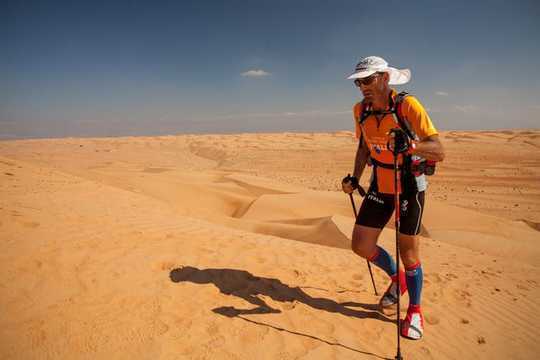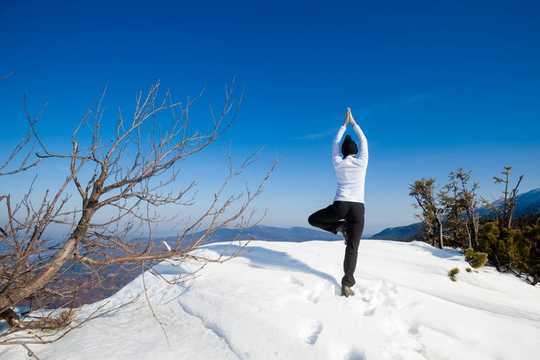First there were heated fitness studios, now the latest trend is working out in frigid temperatures. Although there are some health benefits associated with each of these regimes, there are also some risks. Here’s what you need to know.
Hot workouts
The ideal body temperature is around 37⁰C. When you exercise, your muscles are very inefficient and only 25% of the energy is used for movement. The other 75% of the energy muscles produce is lost as heat, increasing the temperature of your body. If it exceeds 40⁰C, it can be dangereous, so your body tries to keep the temperature at around 37⁰C.
One strategy to prevent body temperature from rising is getting more blood to the skin, which is people’s faces flush during an intense workout. If you exercise in an already hot environment, the difference between body temperature and room temperature is small, and your heart needs to work harder trying to get more blood to the skin.
Another way your body gets rid of excess heat is by warming up sweat to the point at which it evaporates, which then takes heat with it when it evaporates to the air. You can lose up to two litres of water every hour through sweat. As you sweat more during exercise in the heat, it is important to replace the fluid you have lost or your blood can become thicker, which also puts a strain on the heart.
Get The Latest By Email
Both ways of keeping the body under 40⁰C add an extra burden on the heart. As a result, cardio workouts are more difficult in hot environments and endurance performance is decreased in hot environments.
But exercising in a hot environment might be good for short activities that need powerful muscle contractions. There is also a school of thought that light-intensity workouts, such as yoga, can benefit because the extra strain on the heart during exercise in the heat can increase the number of calories you burn. But research by Central Michigan University showed that there was no difference in exercise intensity, so the amount of calories burnt doing yoga at 20⁰C and 35⁰C were the same.
Increasing muscle temperature can increase flexibility and reduce the risk of injury. But a hot environment does not necessarily mean increased muscle temperature.
Regularly undertaking workouts in a hot environment can help endurance performance in the heat, but your overall fitness and health may not get anything extra.

Working out in the heat can improve endurance in the heat, but that’s about all. Klemen K. Misic/Shutterstock
Cold workouts
In the cold, your body is hotter than the surrounding environment and can easily get rid of the heat produced in the muscles during exercise. This stops the temperature of the body from increasing during prolonged exercise and performance in your cardio session will usually be better on cold days. Researchers from the University of Aberdeen found endurance to be best at around 10⁰C (compared with 4⁰C, 21⁰C and 31⁰C).
When it is really cold, the heat produced by your muscles is not enough to maintain a core temperature at 37⁰C. The body has ways to cope with extreme cold environments, such as shivering. Shivering is essentially muscles contracting to produce heat, not movement. As with any muscle contraction, shivering requires energy and burns calories, so at rest you may burn more calories in the cold than in normal temperatures.
Another strategy to cope with cold is to use fat to produce heat. Researchers in the US have shown repeated workouts in the cold increases the amount of brown fat in your body. Brown fat is known as “good fat” as it burns calories.
Both shivering and burning fat consume calories, and studios that hold workout classes at 7⁰C have begun to appear, with the idea that they can help people lose weight. Researchers from Spain found that exposure to a progressively cold environment can increase energy expenditure by up to 30%, which corresponds to around 500 calories for 24 hours of cold exposure. This means exposure to cold can help you lose weight faster, but the effect would be small for a one-hour workout in the cold. And feeling cold is unpleasant.
If you want to increase your muscle strength, doing workouts in the cold probably won’t help. Muscles work best at hot temperatures. When muscles get cold, the force they can produce decreases. You are also more likely to get injured in the cold, but the extra risk of injury is reduced if you warm up properly.
Take-home message
The small extra amount of calories burnt in extreme environments (hot or cold) may help you lose weight, but it could be outweighed by the increased health risks and reduced performance. Doing 150 minutes of physical activity a week is the key to good health, regardless of the temperature.![]()
About the Authors
Lindsay Bottoms, Principal Lecturer, Exercise Physiology, University of Hertfordshire and Daniel Muniz, Senior Lecturer, Exercise Physiology, University of Hertfordshire
This article is republished from The Conversation under a Creative Commons license. Read the original article.
books_exercise








